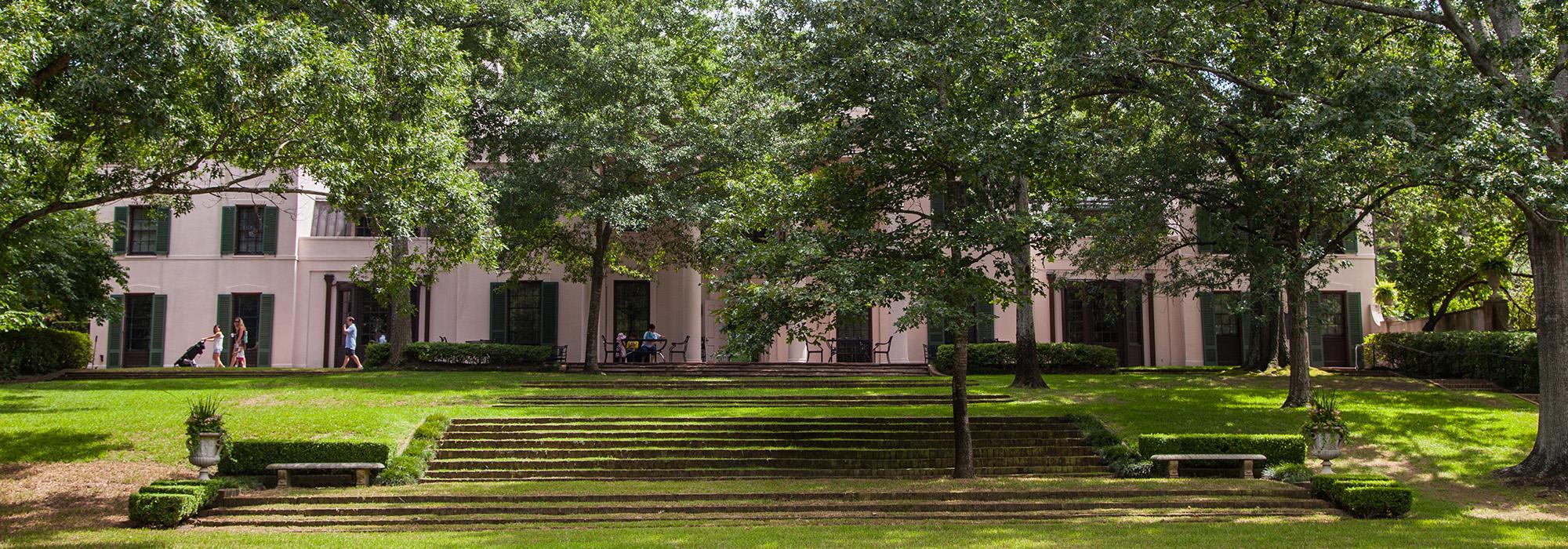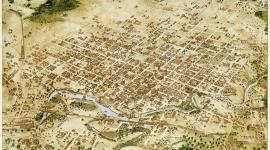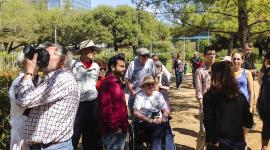Landscape Information
In 1925, Ima Hogg and her brothers purchased 14.5 densely wooded acres in River Oaks, on a peninsular parcel which dramatically dropped down to Buffalo Bayou. In response to the site, architect John Staub centered the double-fronted house on a natural terrace, oriented to face the bayou. The thickly-treed south entrance featured a curved drive and central lawn, while formal garden rooms were created to the north and east. The periphery was kept naturalistic, with trails winding through a woodland of native pine dogwood, and redbud.
Landscape architect Ruth London created the East garden in 1932. The rectangular lawn, enclosed by a high hedge and adorned with pink azaleas, camellias, and blue pansies, features scrolled Japanese boxwood and a fountain with an octagonal basin.
Landscape architects Fleming and Sheppard, led by Pat Fleming and in consultation with Ellen Shipman, created the terraced north garden between 1937 and 1939. Grass-covered steps form an axis from the house, reaching toward a rectangular reflecting pool with arcing fountain jets. Terminating the axis is a marble statue of Diana, housed in an alcove framed by magnolias, azaleas, crepe myrtles, low yaupon hedges and cylindrical Japanese yews. Two gardens lie on a cross-axis: to the east lies a statue of Euterpe shaded by a towering sycamore, while the semblance of Clio is centered in a parterre garden of concentric rings to the west.
Today the Museum of Fine Arts Houston operates the property as a museum. It was listed in the National Register of Historic Places in 1979.

















